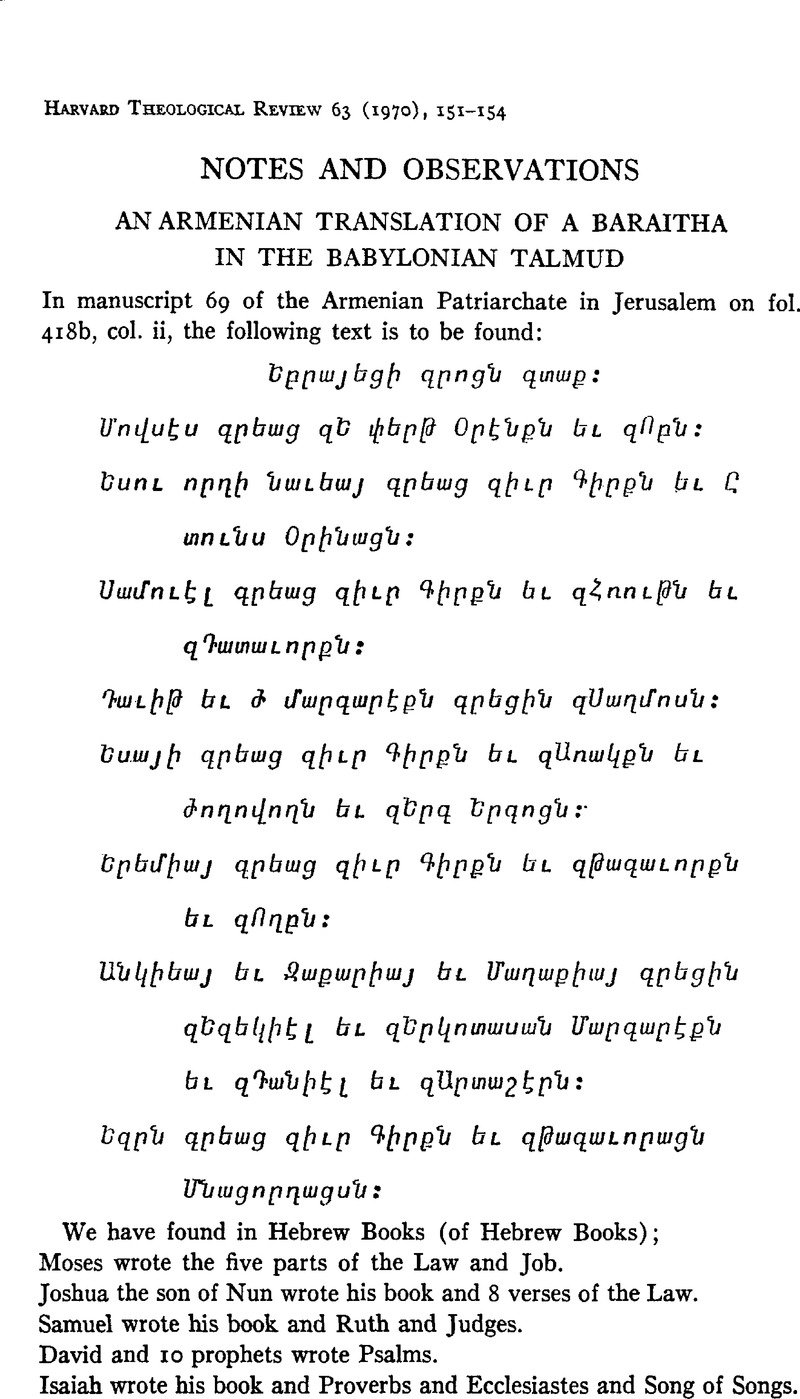Article contents
An Armenian Translation of a Baraitha in the Babylonian Talmud
Published online by Cambridge University Press: 10 June 2011
Abstract

- Type
- Notes and Observations
- Information
- Copyright
- Copyright © President and Fellows of Harvard College 1970
References
1 See Bogharian, N., Grand Catalogue of St. James Manuscripts, I (Jerusalem: St. James Press, 1966), 224–39Google Scholar [in Armenian] for a description of the manuscript. Bp. Bogharian transcribed this passage on p. 225, but failed to identify it.
2 The Baraitha does not appear to reflect the historical order of the books of Isaiah and Jeremiah. The Tosafoth to this passage explain the fact that Isaiah did not write his own book by the tradition of his untimely death at the hands of Manasseh, a tradition to be found also in Yebamoth 49b, as well as in Asc. Isaiah and Vitae Prophetarum, among other sources. This does not solve the chronological problem, and the Tosafoth add that the term “Hezekiah and his associates” refers not to Hezekiah himself but to a school of learning founded by him.
3 These previously unknown fragments are being prepared for publication by the present writer.
- 1
- Cited by


